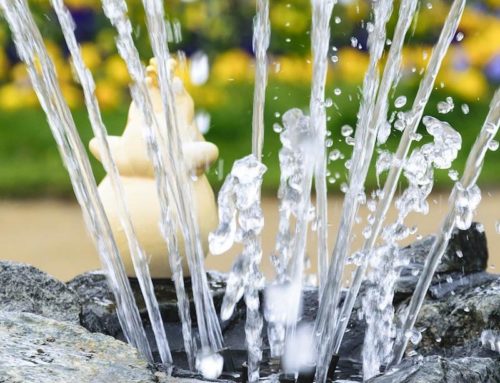Spring is the time to get outside and enjoy the beautiful weather and for pond keepers to re-establish their ponds and water gardens.
1. Check your pond to see what affect the winter weather had on it.
2. Remove all dead leaves and debris from the bottom of the pond. This is a must for a healthy, clean pond. (A pond vacuum works well for this.)
3. Completely clean out the filter system. Restart your filter with a filter- starter product.
4. Make a water change. Over a course of several days make a 15-20% water change, ¼ each day for one or two weeks.
5. In order to remove toxins from your tap water, use a dechlorinator when adding new water to the pond. (Well-water is safe from chlorine & ammonia.)
6. Test your pond water. A good test kit is always useful to have on hand for a quick and accurate way to evaluate pond water quality and stop problems before they occur. Remember, ammonia and toxins are colorless and sometimes odorless and are highly poisonous to your fish. Testing for nitrates, ammonia and proper pH is VERY important for the long-term health of your fish and pond. To get an accurate reading from your test kit, always take water from the deepest part of the pond.
7. Fish Food: If your fish food is open and more than six months old, toss it! If you’ve had it in the freezer for more than six months, toss it! Do not use catfish or trout food to feed your Koi and Goldfish, this feed is designed to grow fish at a faster rate than is healthy for your long-lived Koi and Goldfish. As the pond temperature approaches 55degrees, your fish will start looking for food, so make sure it is fresh, low in protein and high in carbohydrates.
8. Plants: Spring is a great time to re-pot water lilies and other water plants. Always use aquatic planting media because it keeps the water clearer, holds the plants securely in place, and helps the root systems to breathe better. Make sure to use aquatic plant food tablets because they are time-released to ensure maximum growth and flowering.
Remember: The more plants in the water, the more your pond water will be shaded and the better water quality you will have. The more shade you have from plants, the less algae you have to deal with.
Don’t panic if your pond turns pea-soup green one day and crystal-clear the next, this is normal in the spring. Your pond is just trying to re-establish its biological system. You can speed this process up by adding some bacterial products like Pond-Zyme Plus with Ecofix, Algaefix with Ecofix, Algae-Off or use a UV light which will control green water and any algae blooms.


